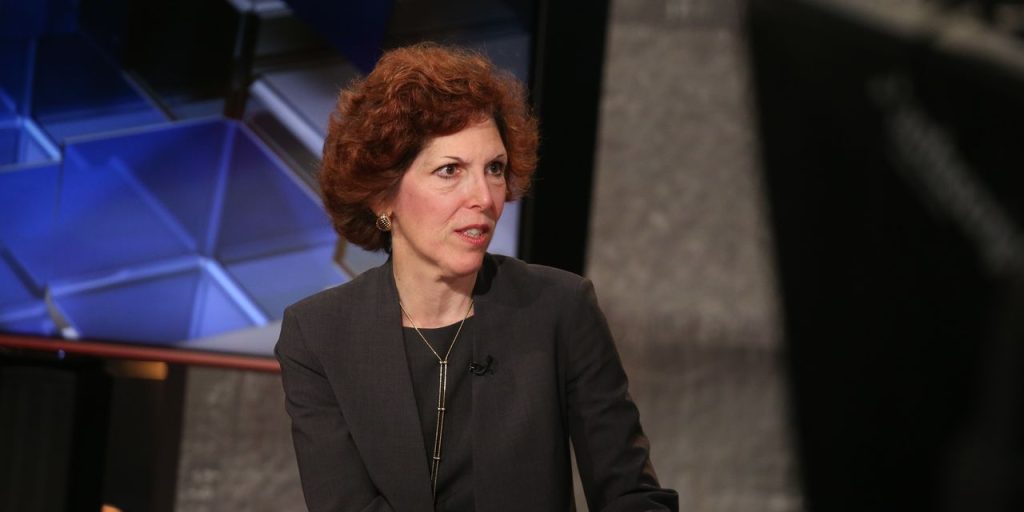Cleveland Fed President Loretta Mester said she expects the central bank will have to raise interest rates further, and then hold them at high levels, in order to bring down inflation.
“In my modal projection, to put inflation on a sustained downward trajectory to 2% and to keep inflation expectations anchored, monetary policy moves somewhat further into restrictive territory this year, with the fed funds rate moving above 5% and the real fed funds rate staying in positive territory for some time,” Mester told a group of professional economic forecasters in a speech in New York on Tuesday evening.
In their March policy statement, Fed officials said more rate hikes “may” be needed and penciled in one more rate hike to their forecast, which would bring their benchmark rate to a range of 5%-5.25%.
In an interview on Wednesday on Bloomberg Television, Mester said her forecast is “probably a little higher than the median dot.”
In her speech, the Cleveland Fed president said that there is “heightened uncertainty” surrounding the outlook in light of the recent stress on banks in the wake of the rapid collapse of Silicon Valley Bank.
The tensions “could well result in banks further tightening their credit standards and household and businesses to become more cautious in their spending,” Mester said.
“Directionally, we know that credit conditions are likely going to be somewhat tighter, and we will be assessing the magnitude and duration of these effects on the economic outlook to help us calibrate the appropriate path of monetary policy going forward,” Mester said.
The Fed will have to look at a “whole panoply” of data to understand where the economy is going, she said.
Mester said she sees somewhat more persistent inflation pressures than the median forecast of Fed officials.
The central bank’s median forecast is for headline PCE inflation to cool to a 3.3% rate this year, 2.5% in 2024 and 2.1% in 2025. Headline inflation was running at a 5% annual rate in February.
Tim Duy, chief U.S. economist at SGH Macro Advisors, said he thinks it will be difficult for the Fed to pause its interest rate rises at its next meeting in early May, with inflation elevated and job growth strong.
The Labor Department will release the March employment report on Friday. Economists surveyed by the Wall Street Journal are expecting that the economy added 238,000 jobs. If that forecast is correct, it would mean the economy added over 1 million jobs in the first three months of the year.
Some analysts think the Fed is caught between the need for easy monetary policy to support the financial system and tight policy to rein in inflation.
In her speech, Mester said she didn’t see a tradeoff between the two goals.
She said it was “vital” that the Fed use regulatory and supervisory tools to keep the banking system safe and sound. And “well-formulated and well-communicated” interest-rate policy can achieve the goals of low inflation and a strong labor market, she said.
Traders in derivative markets now see less than a 50% chance of a rate hike at the Fed’s May meeting and that rates have peaked in the current range of 4.75%-5%, according to the CME FedWatch tool. Investors see the Fed starting to lower rates in the summer, with 75 basis points in cuts expected by the end of the year.
In the television interview, Mester said the Fed’s strategy was not to continue to tighten until something breaks. She said the Fed needs to be open to what the data is saying about the economy.
The yield on the 10-year Treasury note
TMUBMUSD10Y,
3.404%
has fallen to 3.31%, well below the 4% level reached prior to the bank tension.
Read the full article here



